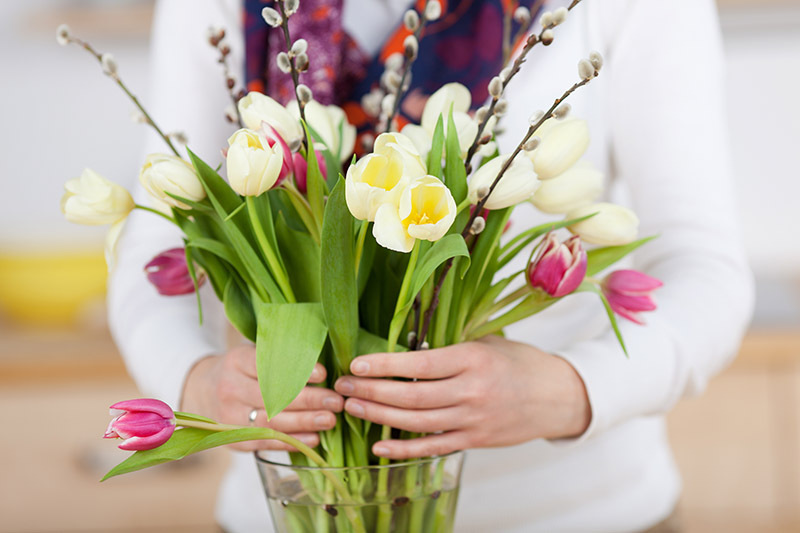Expose 3 easy-to-follow methods for preserving your cherished blooms
Posted on 29/08/2025
Expose 3 Easy-to-Follow Methods for Preserving Your Cherished Blooms
Fresh flowers have a remarkable ability to evoke memories and brighten up our living spaces. Whether received as thoughtful gifts, bouquets from special occasions, or handpicked treasures from your garden, preserving your cherished blooms helps those vivid moments last for years to come. In this comprehensive guide, we expose three foolproof techniques that allow you to keep your precious flowers intact and beautiful. Perfect for floral enthusiasts, crafty decorators, or anyone seeking to extend the life of their beloved blossoms, these methods are simple, effective, and accessible to all.

Why Preserve Your Favorite Flowers?
Before diving into the practical steps, it's valuable to understand why flower preservation matters. Whether it's the bouquet from your wedding, an anniversary centerpiece, or a special wildflower you discovered on a treasured hike, preserving blooms captures their sentimental value. Displaying these preserved blossoms can:
- Enhance your home decor with personal, meaningful accents
- Serve as unique handmade gifts or keepsakes
- Allow you to relive touching memories and commemorate milestones
With that in mind, let's expose the three most reliable and easy-to-follow methods for keeping your favorite flowers vibrant and preserved for years to come.
Method 1: Air Drying - Nature's Classic Approach
What is Air Drying?
Air drying flowers is the simplest and most traditional way to preserve your blossoms. By allowing natural evaporation to gently remove moisture, flowers retain their shape, color, and sentimental value. This timeless method works especially well for sturdy, long-lasting varieties such as roses, lavender, and baby's breath.
How to Air Dry Flowers - A Step-by-Step Guide
- Select Your Flowers: Choose freshly picked flowers that are free from moisture or blemishes. Remove any excess foliage from the stems.
- Bundle and Secure: Gather your flowers into small bunches, secure them with rubber bands or string, and ensure stems aren't overcrowded to enable airflow.
- Hang Upside Down: Suspend your bouquets upside down in a dry, dark, and well-ventilated space (like a closet or attic). Darkness preserves color, and good ventilation prevents mold.
- Wait and Inspect: Let the flowers dry for two to three weeks. Check occasionally to ensure they are not becoming brittle or developing mold.
- Display or Store: Once dry, your preserved blooms are ready! Carefully handle and arrange them for decor or craft projects. Optionally, lightly mist with unscented hair spray to help them retain their shape.
Pros of Air Drying:
- Cost-effective and requires minimal tools
- Best for preserving bouquets and thicker stems
- Retains a charming, rustic appearance
Cons:
- Some colors may fade or brown over time
- Delicate petals may shrink or curl
Air drying remains a trusted method for conserving your prized blooms in their most natural form.
Method 2: Pressing - Transforming Flowers into Art
The Art of Flower Pressing
For those who love crafting or dream of framing botanical art, pressing flowers is a perfect technique for preserving cherished blossoms. This method flattens flowers while maintaining their color and delicate details. It's ideal for creating greeting cards, bookmarks, wall art, and wedding invitations.
How to Press Flowers Effectively
Here's a practical method to press your blooms without any specialized equipment:
- Choose Flat Blooms: Opt for naturally flat or single-layered flowers (like pansies, violets, or daisies). If needed, cut thicker flowers in half to make them more pressable.
- Prepare Materials: You'll need parchment paper or blotting paper, and a heavy book (such as a phone book or dictionary).
- Arrange and Cover: Place the flower between two pieces of paper to avoid direct contact with the book pages. Arrange the petals carefully to ensure the desired shape.
- Press and Wait: Close the book and weigh it down with additional books or a heavy object. Allow the flowers to press for 2-3 weeks, checking occasionally for dryness.
- Create and Display: Once completely dry, your preserved petals are ready to be used in art, displayed in frames, or gifted to loved ones!
Pros of Flower Pressing:
- Perfect for crafting and paper art
- Vibrant colors often retained beautifully
- Simple and uses household items
Cons:
- Flowers lose three-dimensional shape
- Not ideal for large, thick petals or bouquets
Pressed flowers offer a timeless way to turn your cherished blooms into artistic displays and heartfelt keepsakes.
Method 3: Silica Gel Drying - Fast and Colorful Preservation
Why Use Silica Gel?
For vivid colors and intricate details, silica gel flower drying is a modern, highly effective way to preserve your floral treasures. Silica gel crystals (available in craft stores) pull moisture out rapidly, locking in the vibrant shades and delicate textures of your petals. This method is particularly well-suited for roses, zinnias, peonies, and other thick-bloomed flowers.
Step-by-Step Silica Gel Drying
- Acquire Silica Gel: Purchase flower-drying silica gel from your local craft supplier or online. Ensure it is labeled safe for flower preservation.
- Prepare Your Container: Use an airtight plastic or glass container that's large enough for your flowers to sit without touching each other or the sides.
- Layer Silica Gel and Arrange Flowers: Pour a 1-inch layer of silica gel in the container bottom. Gently nestle your flowers (stemless) on top. Slowly sprinkle or spoon more gel around and over the petals until the blooms are completely covered.
- Seal and Wait: Tightly close the container. Most flowers dry within 2-7 days, with thicker flowers needing the full week. For best results, check the manufacturer's instructions.
- Remove and Clean: Carefully lift the flowers out. Use a soft brush to gently remove any remaining crystals from the petals and stems.
- Display in Style: Your vividly preserved flowers are now ready to be arranged in shadow boxes, glass domes, or handmade jewelry pieces.
Pros of Silica Gel Drying:
- Retains three-dimensional shape and vibrant color
- Quickest method--results in under a week
- Ideal for thick, exotic, or rare flowers
Cons:
- Requires purchase of silica gel and special airtight containers
- More hands-on attention needed when handling petals
For those who wish to keep beloved blossoms looking almost as fresh as the day they were picked, silica gel drying is undoubtedly the best choice.
Preserving Your Cherished Blooms: Extra Tips for Success
Regardless of your chosen method, keep these helpful tips in mind to maximize your preservation results:
- Pick and Preserve Promptly: For best color and integrity, begin the preservation process soon after picking flowers.
- Avoid Direct Sunlight: Prolonged light can fade colors even after preservation.
- Store Carefully: Handle your preserved blossoms gently to avoid breakage. Store pressed or dried flowers in dry, climate-controlled environments.
- Experiment and Personalize: Try mixing methods (such as air drying plus pressing) for unique textures and creative projects--including resin art, scrapbooks, or DIY gifts.

Frequently Asked Questions About Flower Preservation
Which blossoming varieties work best for each method?
- Air drying: Roses, lavender, hydrangea, statice, and eucalyptus
- Pressing: Violas, pansies, ferns, cosmos, daisies
- Silica gel: Peonies, dahlias, snapdragons, tulips, orchids
Can I preserve a mixed bouquet?
Absolutely! For the best results, separate delicate flowers and select the best preservation method for each. Combine air drying for robust blooms and press or silica gel for delicate varieties.
How long do preserved flowers last?
With proper care, dried or pressed blossoms can last for several years! Silica gel-dried flowers may retain their vibrant colors longer, while air-dried and pressed blooms might fade softly over time, adding their own vintage charm.
Conclusion: Celebrate Your Memories Through Preserved Blooms
From classic air drying to artful pressing and innovative silica gel techniques, there are delightful and accessible ways to preserve your cherished blooms at home. Whichever method you choose, you're not just saving flowers--you're holding onto the emotions, celebrations, and memories they represent. Try these easy-to-follow methods to turn bouquets, single stems, or garden favorites into meaningful keepsakes you'll cherish for years to come.
Ready to start? Gather your favorite blooms, experiment with these three trusted preservation techniques, and enjoy the timeless beauty of flowers--long after their fresh days have passed!
Begin your journey with flower preservation today and let your floral memories blossom forever!
Latest Posts
Insider Tips on Extending Your Poinsettias' Bloom
Expose 3 easy-to-follow methods for preserving your cherished blooms
8 Lesser-Known Sunflower Facts That Will Intrigue You






